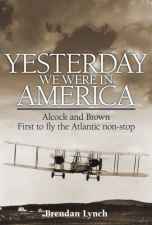
1894-1975 |
 |
|
Collection of Mr. John Godwin |
|
CHIRP, JUNE, 1937 Los Angeles, California - Number 20 |
 |
|
Collection of Mr. John Godwin |
|
|
|
I wish to thank Mr. Andy Holt, EJITU Web Development Manager, for graciously allowing me to reproduce the photos.You will find that this website is a unique resource and offers photos of immense historical interest. I am sure you will want to spend some time enjoying the other photographs and features. You can access it by clicking on the title above. |
|
|
 |
|
I saw your very interesting site on Sydney on Yahoo...well done....I admire those that take the time to enhance our aviation history. I thought a scan of the autograph Ive just acquired may find favor in your archives. As an aside I was in the Victorian Aero Club many years ago and have my 'Wings' from the RVAC , (Royal Victorian Aero Club), proudly on the side , although I can only claim to have gone solo there as I finished off the license in Queensland ! Cheers and Best Regards Tony Editor's Note: My thanks go to Tony for sharing this piece of historical memorabilia with us. Note also the signatures of Claude Grahame-White and G. W. (Gustav) Hamel. |
 |
Yesterday We Were in America Brendan Lynch Product Details Hardcover: 256 pages Publisher: Haynes Publishing (November 1, 2009) List Price: $23.07 ISBN-10: 1844256812 ISBN-13: 978-1844256815 |
|
Editorial Reviews from Amazon.com On 14 June 1919 John Alcock and Arthur Whitten Brown took off from Newfoundland in their open-cockpit Vickers Vimy converted bomber to attempt a non-stop crossing of the Atlantic. Some 16 hours later they landed at Derrygimla in Connemara, Ireland, to become national heroes. Navigating blind for most of the way, they had flown almost 1,900 miles, the longest distance ever flown by man. In researching one of the most significant flights in history, Brendan Lynch has drawn on the written records of Alcock and Brown, and interviewed the last surviving witness of their dramatic arrival in Ireland and the adventurer Steve Fossett, who recreated the flight in 2005. Book Description On 14 June 1919 John Alcock and Arthur Whitten Brown took off from Newfoundland in their open-cockpit Vickers Vimy converted bomber to attempt a non-stop crossing of the Atlantic. Some 16 hours later they landed at Derrygimla in Connemara, Ireland, to become national heroes. Navigating blind for most of the way, they had flown almost 1,900 miles, the longest distance ever flown by man. In researching one of the most significant flights in history, Brendan Lynch has drawn on the written records of Alcock and Brown, and interviewed the last surviving witness of their dramatic arrival in Ireland and the adventurer Steve Fossett, who recreated the flight in 2005. |
|
Sydney Pickles, who had been living in Victoria, B.C. died Sunday, November 23, 1975. He was born in
Sydney, Australia June 17, 1894 He went to England in early 1912 to learn to fly and he successfully passed the tests for his English FAI certificate No. 263. In 1913 he passed more official tests and obtained Superior Certificate No. 8. He joined the Royal Naval Air Service at the outbreak of World War I in 1914 and took part in submarine patrol over the North Sea and raids over the continent. He also trained other pilots for the war effort. After one year he resigned his commission and returned to civilian life as a test pilot for the British Admiralty. In 1919 he received Air Ministry License No. 9. After the war he returned to Australia taking with him his own plane, a "Jenny" with which he established many "firsts' in that country. In 1925 Sydney moved to Victoria, B.C. and organized the Victoria Aero Club. He was the Chief Instructor until one of the members smashed the plane in an accident. This really finished Sydney's flying career as he could not afford to purchase another plane. After this he headed up a program through which appliances of various kinds were loaned without cost to handicapped persons. For this work he was named Citizen of the Year. He is survived by his wife, Adelaide, two sons and five grandchildren. Editor's Note: If you have any more information on this pioneer aviator please contact me. E-mail to Ralph Cooper Back 
 |